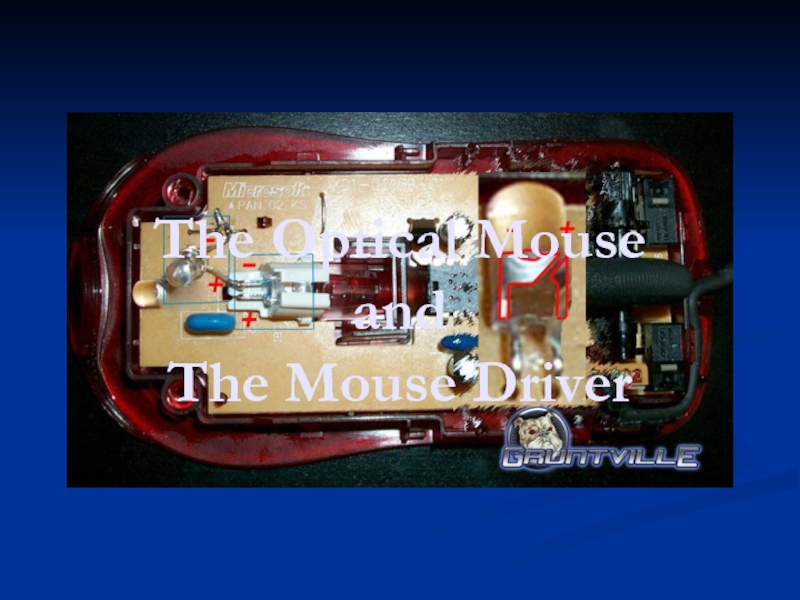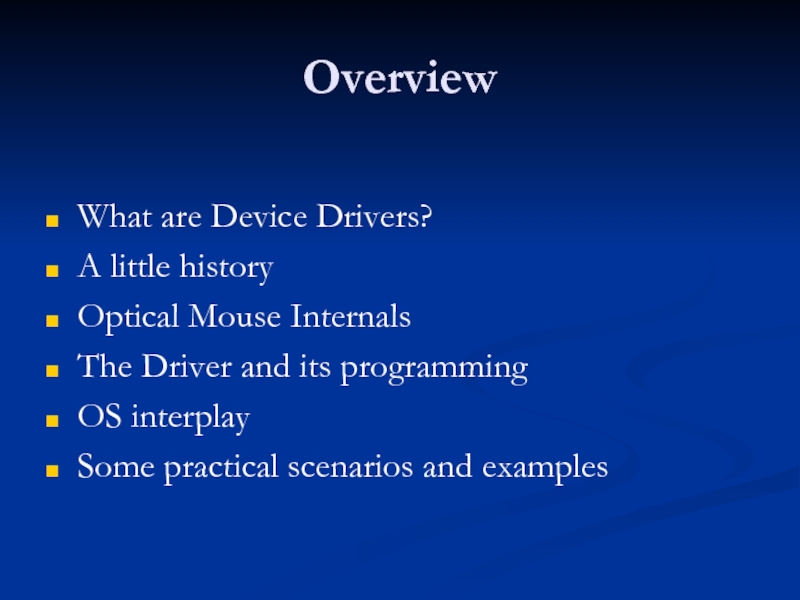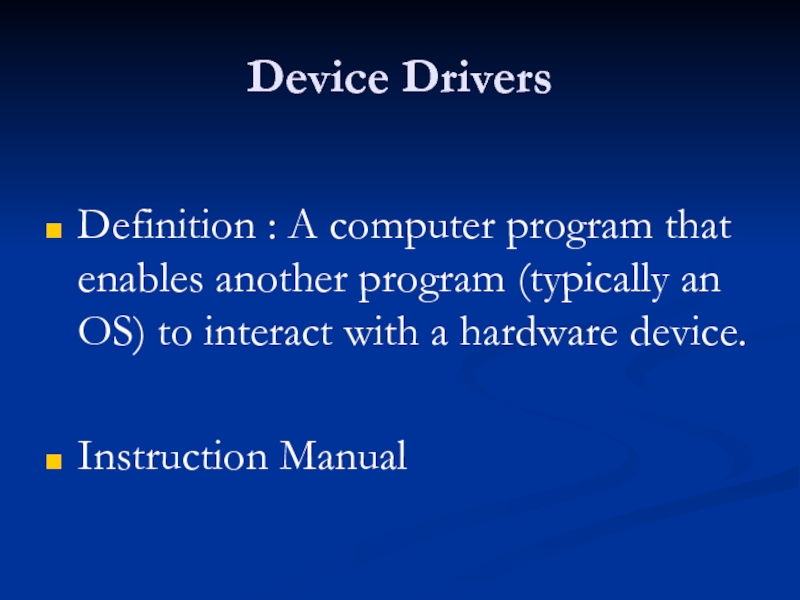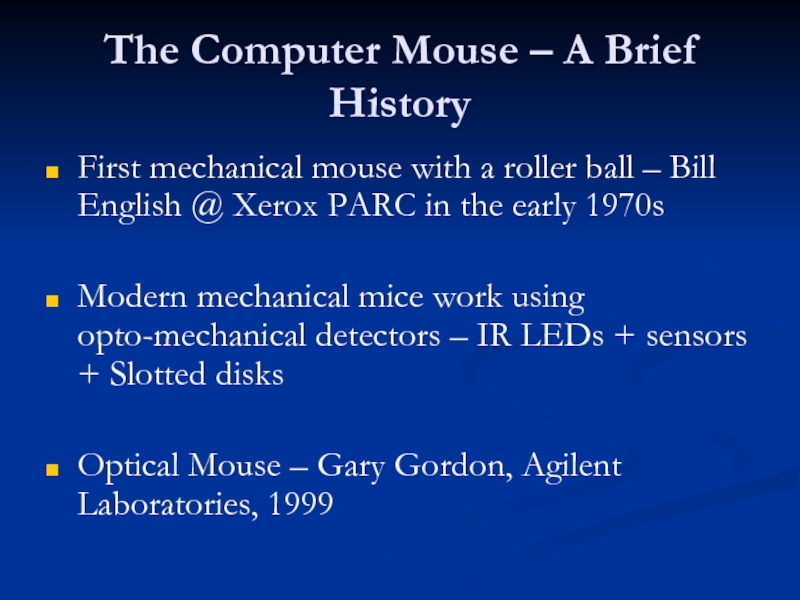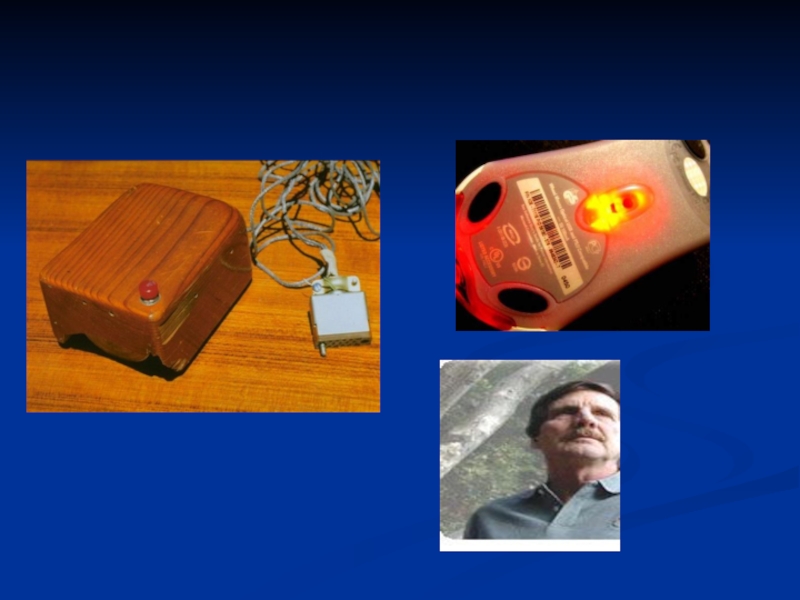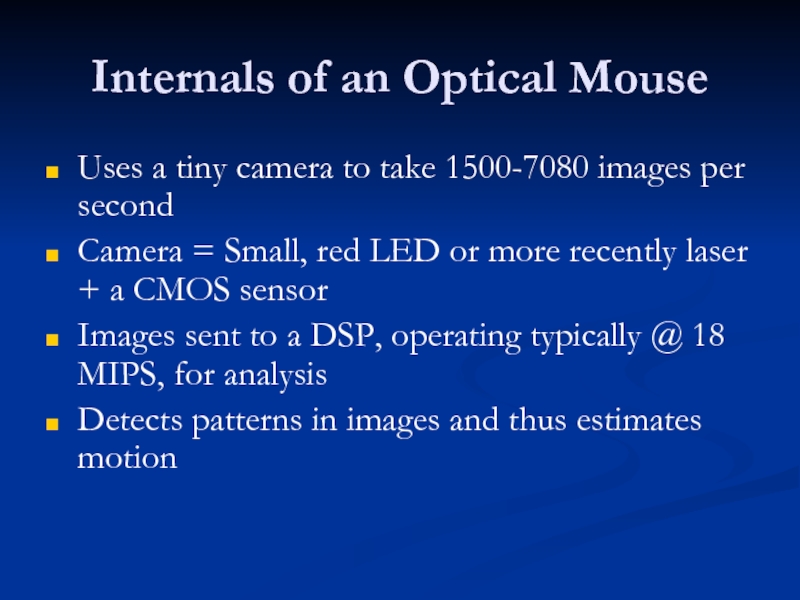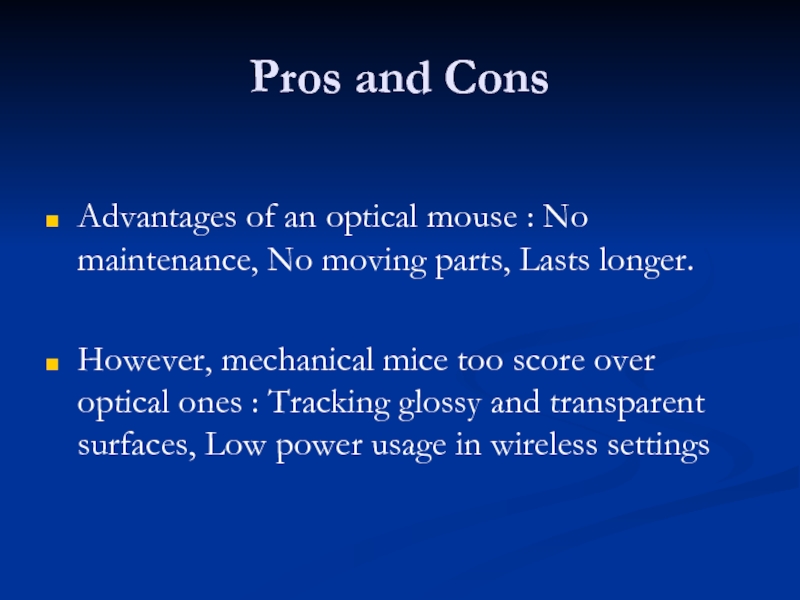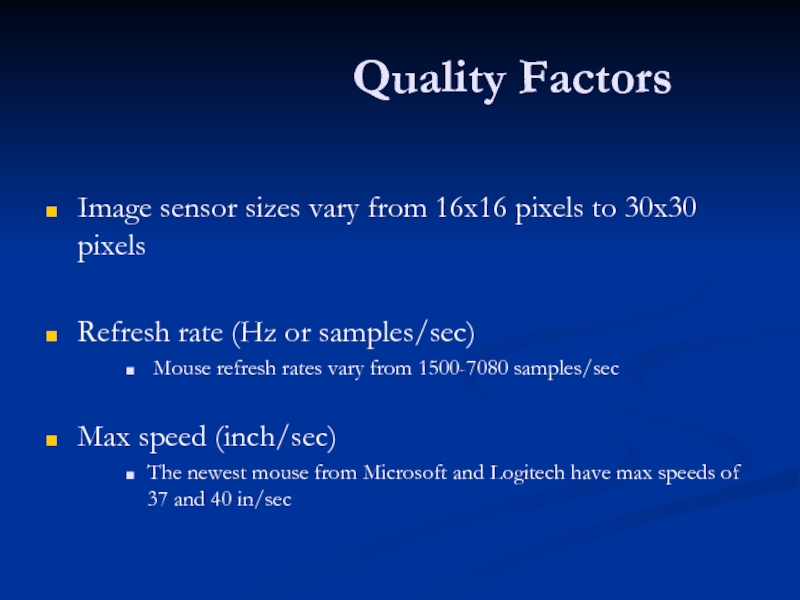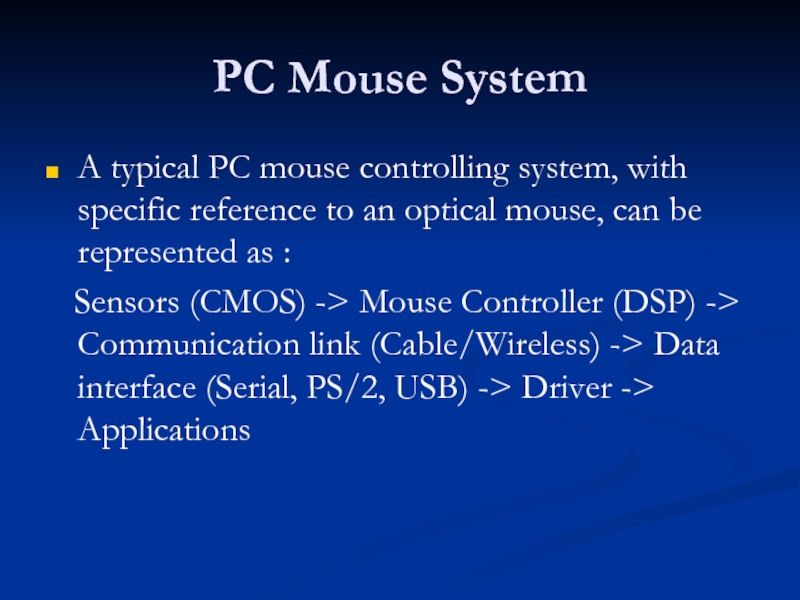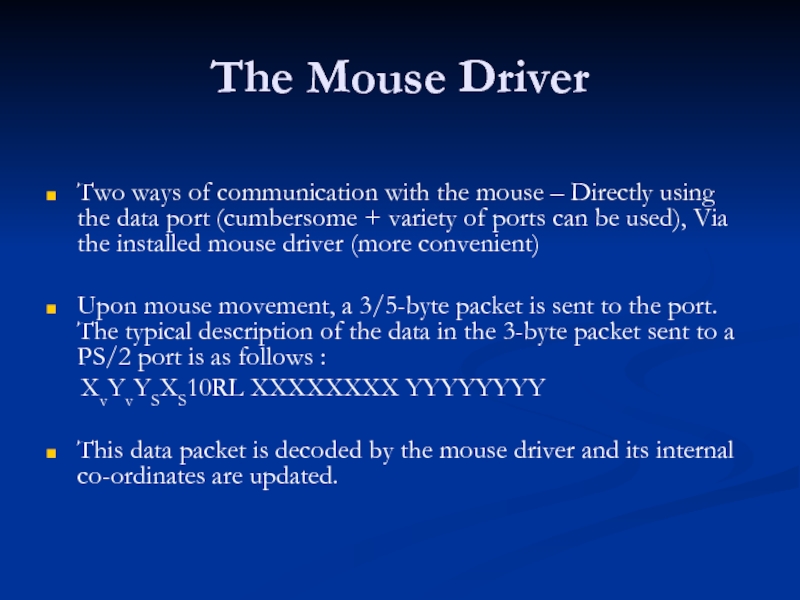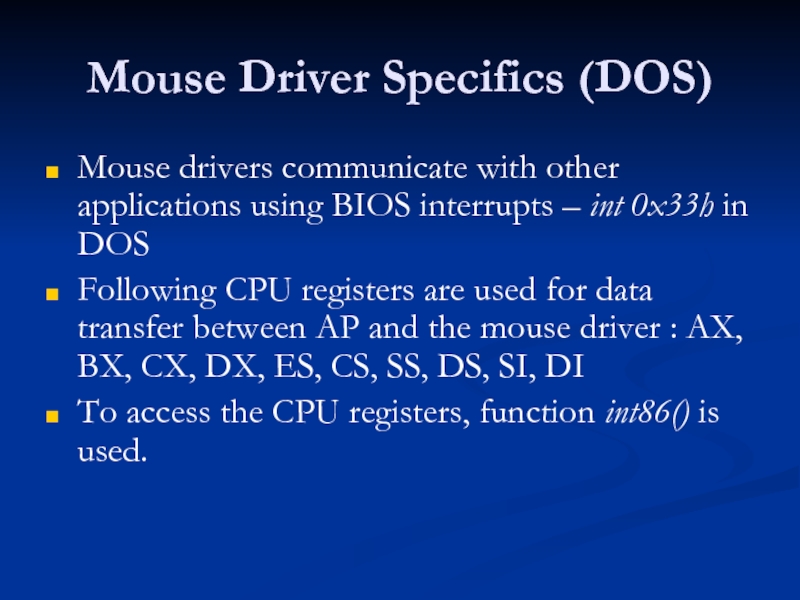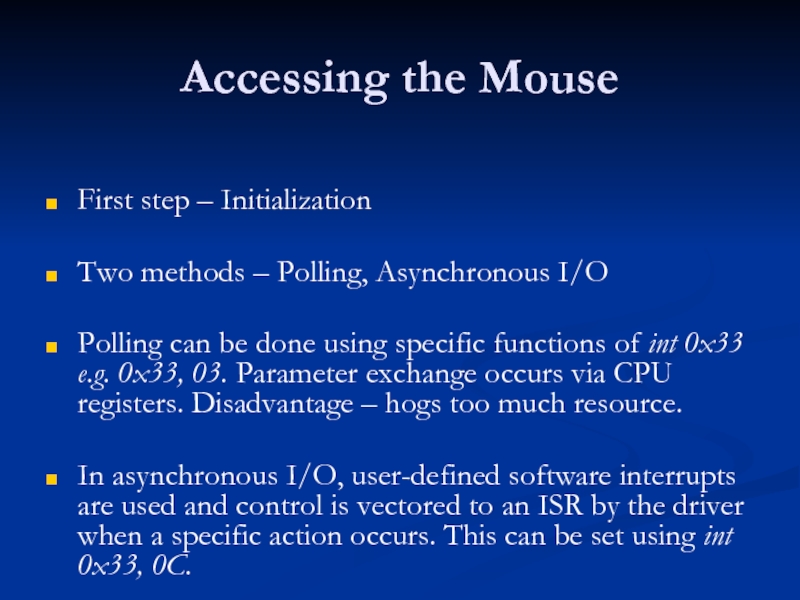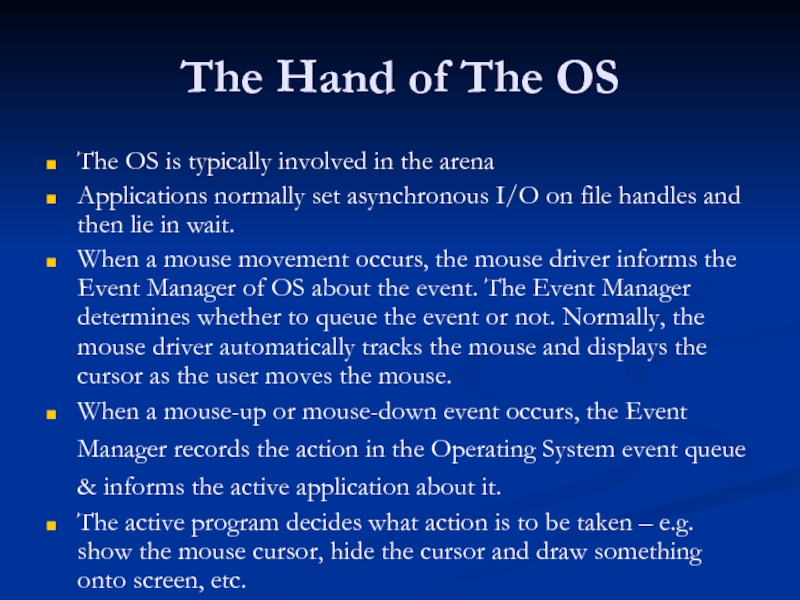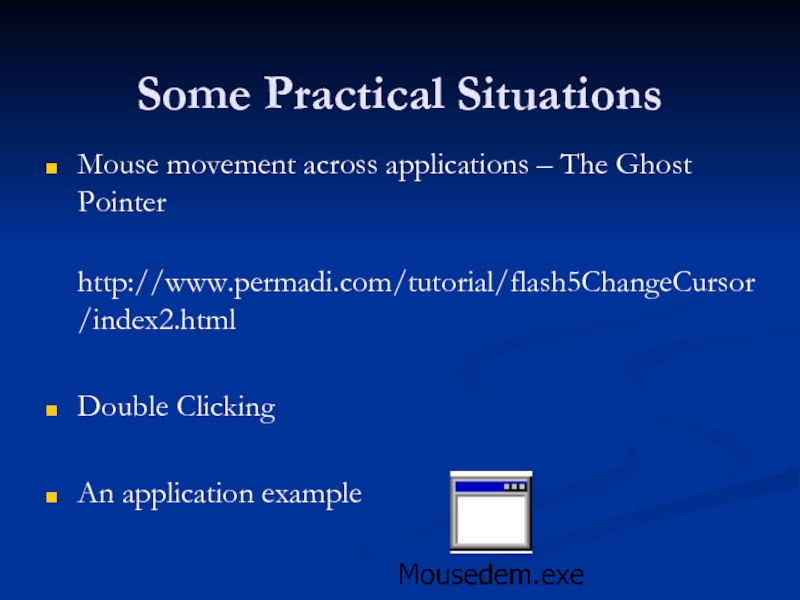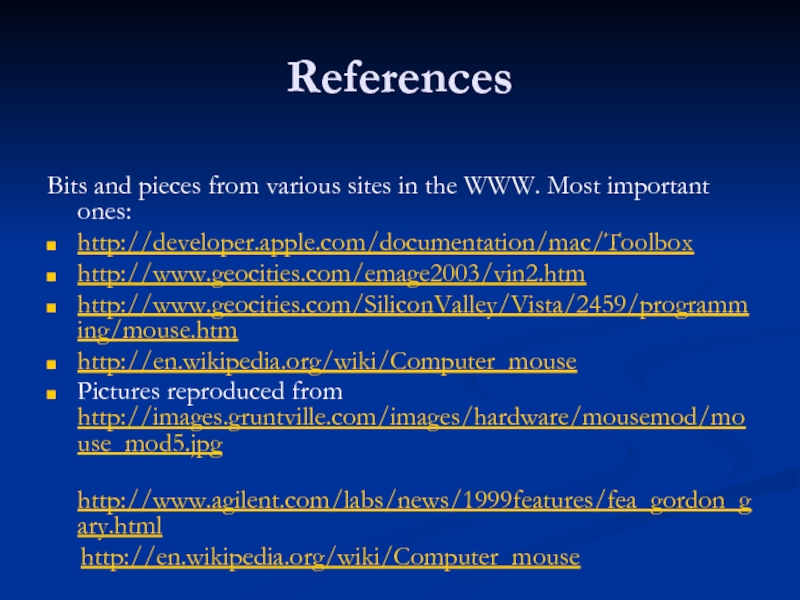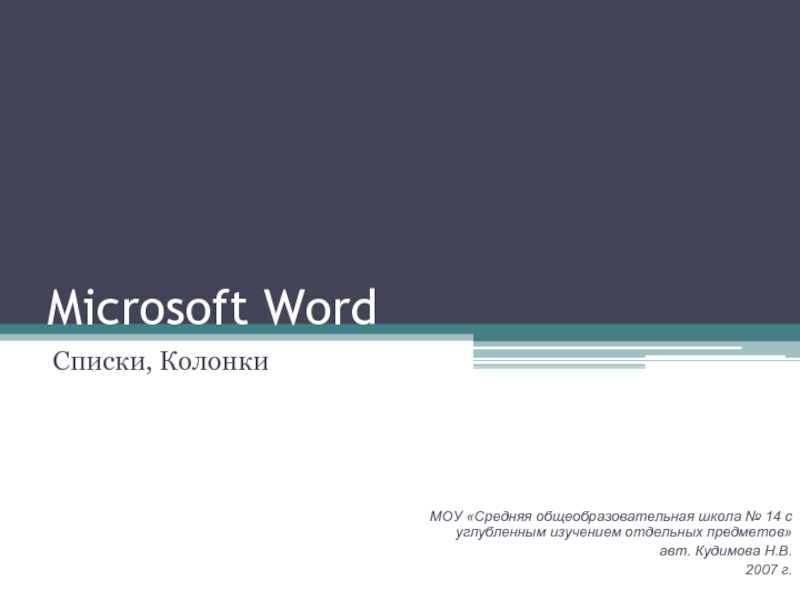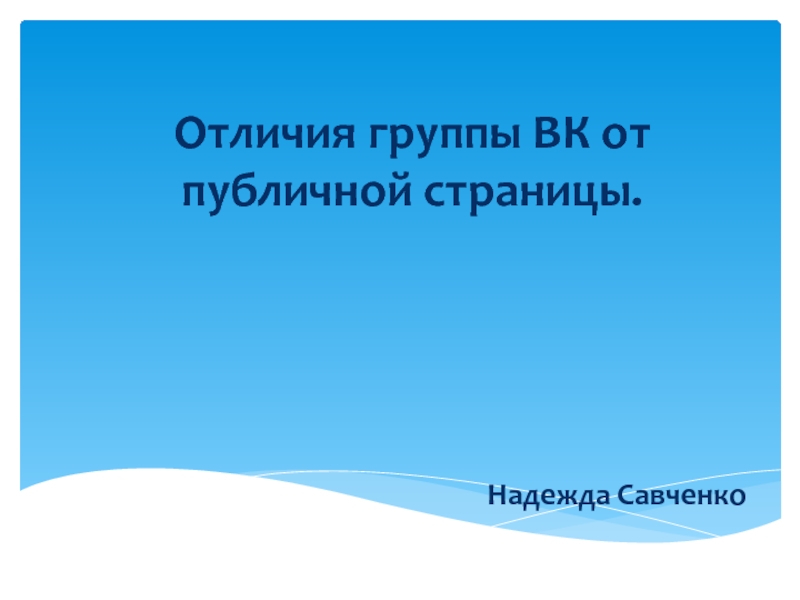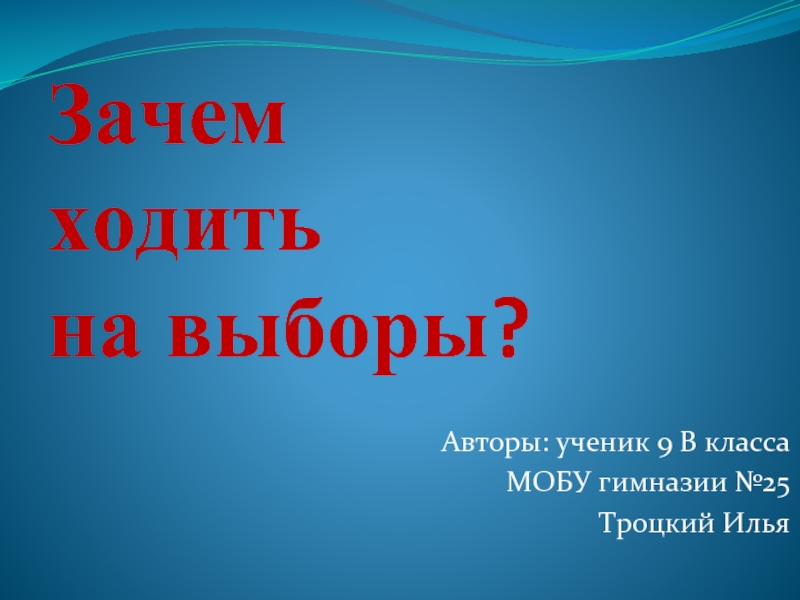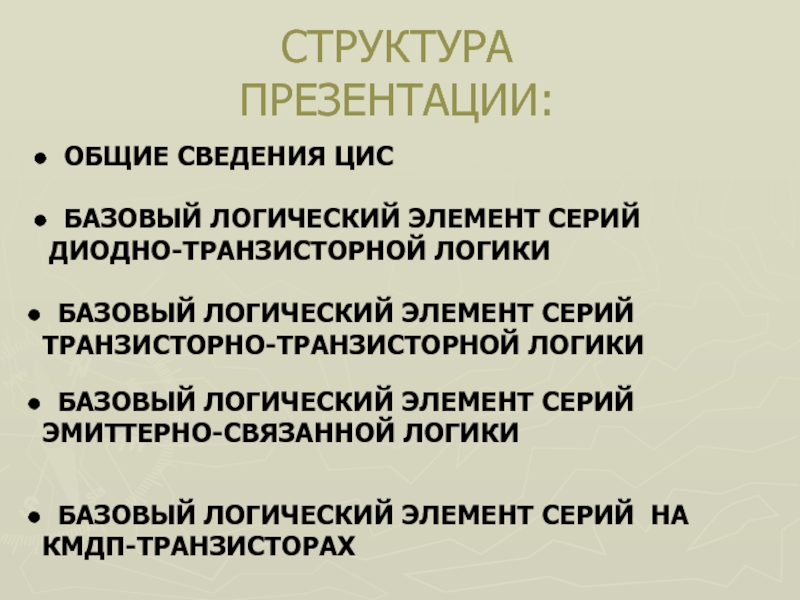- Главная
- Разное
- Дизайн
- Бизнес и предпринимательство
- Аналитика
- Образование
- Развлечения
- Красота и здоровье
- Финансы
- Государство
- Путешествия
- Спорт
- Недвижимость
- Армия
- Графика
- Культурология
- Еда и кулинария
- Лингвистика
- Английский язык
- Астрономия
- Алгебра
- Биология
- География
- Детские презентации
- Информатика
- История
- Литература
- Маркетинг
- Математика
- Медицина
- Менеджмент
- Музыка
- МХК
- Немецкий язык
- ОБЖ
- Обществознание
- Окружающий мир
- Педагогика
- Русский язык
- Технология
- Физика
- Философия
- Химия
- Шаблоны, картинки для презентаций
- Экология
- Экономика
- Юриспруденция
The optical mouse and the mouse driver презентация
Содержание
- 1. The optical mouse and the mouse driver
- 2. Overview What are Device Drivers? A
- 3. Device Drivers Definition : A computer
- 4. The Computer Mouse – A Brief History
- 6. Internals of an Optical Mouse Uses a
- 7. Pros and Cons Advantages of an
- 8. Quality Factors Image sensor sizes vary
- 9. PC Mouse System A typical PC mouse
- 10. The Mouse Driver Two ways of
- 11. Mouse Driver Specifics (DOS) Mouse drivers communicate
- 12. Accessing the Mouse First step –
- 13. The Hand of The OS The OS
- 14. Some Practical Situations Mouse movement across applications
- 15. References Bits and pieces
Слайд 2Overview
What are Device Drivers?
A little history
Optical Mouse Internals
The Driver and its
programming
OS interplay
Some practical scenarios and examples
OS interplay
Some practical scenarios and examples
Слайд 3Device Drivers
Definition : A computer program that enables another program (typically
an OS) to interact with a hardware device.
Instruction Manual
Instruction Manual
Слайд 4The Computer Mouse – A Brief History
First mechanical mouse with a
roller ball – Bill English @ Xerox PARC in the early 1970s
Modern mechanical mice work using opto-mechanical detectors – IR LEDs + sensors + Slotted disks
Optical Mouse – Gary Gordon, Agilent Laboratories, 1999
Modern mechanical mice work using opto-mechanical detectors – IR LEDs + sensors + Slotted disks
Optical Mouse – Gary Gordon, Agilent Laboratories, 1999
Слайд 6Internals of an Optical Mouse
Uses a tiny camera to take 1500-7080
images per second
Camera = Small, red LED or more recently laser + a CMOS sensor
Images sent to a DSP, operating typically @ 18 MIPS, for analysis
Detects patterns in images and thus estimates motion
Camera = Small, red LED or more recently laser + a CMOS sensor
Images sent to a DSP, operating typically @ 18 MIPS, for analysis
Detects patterns in images and thus estimates motion
Слайд 7Pros and Cons
Advantages of an optical mouse : No maintenance, No
moving parts, Lasts longer.
However, mechanical mice too score over optical ones : Tracking glossy and transparent surfaces, Low power usage in wireless settings
However, mechanical mice too score over optical ones : Tracking glossy and transparent surfaces, Low power usage in wireless settings
Слайд 8Quality Factors
Image sensor sizes vary from 16x16 pixels to 30x30 pixels
Refresh rate (Hz or samples/sec)
Mouse refresh rates vary from 1500-7080 samples/sec
Max speed (inch/sec)
The newest mouse from Microsoft and Logitech have max speeds of 37 and 40 in/sec
Слайд 9PC Mouse System
A typical PC mouse controlling system, with specific reference
to an optical mouse, can be represented as :
Sensors (CMOS) -> Mouse Controller (DSP) -> Communication link (Cable/Wireless) -> Data interface (Serial, PS/2, USB) -> Driver -> Applications
Sensors (CMOS) -> Mouse Controller (DSP) -> Communication link (Cable/Wireless) -> Data interface (Serial, PS/2, USB) -> Driver -> Applications
Слайд 10The Mouse Driver
Two ways of communication with the mouse – Directly
using the data port (cumbersome + variety of ports can be used), Via the installed mouse driver (more convenient)
Upon mouse movement, a 3/5-byte packet is sent to the port. The typical description of the data in the 3-byte packet sent to a PS/2 port is as follows :
XvYvYSXS10RL XXXXXXXX YYYYYYYY
This data packet is decoded by the mouse driver and its internal co-ordinates are updated.
Upon mouse movement, a 3/5-byte packet is sent to the port. The typical description of the data in the 3-byte packet sent to a PS/2 port is as follows :
XvYvYSXS10RL XXXXXXXX YYYYYYYY
This data packet is decoded by the mouse driver and its internal co-ordinates are updated.
Слайд 11Mouse Driver Specifics (DOS)
Mouse drivers communicate with other applications using BIOS
interrupts – int 0x33h in DOS
Following CPU registers are used for data transfer between AP and the mouse driver : AX, BX, CX, DX, ES, CS, SS, DS, SI, DI
To access the CPU registers, function int86() is used.
Following CPU registers are used for data transfer between AP and the mouse driver : AX, BX, CX, DX, ES, CS, SS, DS, SI, DI
To access the CPU registers, function int86() is used.
Слайд 12Accessing the Mouse
First step – Initialization
Two methods – Polling, Asynchronous I/O
Polling
can be done using specific functions of int 0x33 e.g. 0x33, 03. Parameter exchange occurs via CPU registers. Disadvantage – hogs too much resource.
In asynchronous I/O, user-defined software interrupts are used and control is vectored to an ISR by the driver when a specific action occurs. This can be set using int 0x33, 0C.
In asynchronous I/O, user-defined software interrupts are used and control is vectored to an ISR by the driver when a specific action occurs. This can be set using int 0x33, 0C.
Слайд 13The Hand of The OS
The OS is typically involved in the
arena
Applications normally set asynchronous I/O on file handles and then lie in wait.
When a mouse movement occurs, the mouse driver informs the Event Manager of OS about the event. The Event Manager determines whether to queue the event or not. Normally, the mouse driver automatically tracks the mouse and displays the cursor as the user moves the mouse.
When a mouse-up or mouse-down event occurs, the Event Manager records the action in the Operating System event queue & informs the active application about it.
The active program decides what action is to be taken – e.g. show the mouse cursor, hide the cursor and draw something onto screen, etc.
Applications normally set asynchronous I/O on file handles and then lie in wait.
When a mouse movement occurs, the mouse driver informs the Event Manager of OS about the event. The Event Manager determines whether to queue the event or not. Normally, the mouse driver automatically tracks the mouse and displays the cursor as the user moves the mouse.
When a mouse-up or mouse-down event occurs, the Event Manager records the action in the Operating System event queue & informs the active application about it.
The active program decides what action is to be taken – e.g. show the mouse cursor, hide the cursor and draw something onto screen, etc.
Слайд 14Some Practical Situations
Mouse movement across applications – The Ghost Pointer
http://www.permadi.com/tutorial/flash5ChangeCursor/index2.html
Double
Clicking
An application example
An application example
Слайд 15References
Bits and pieces from various sites in the WWW.
Most important ones:
http://developer.apple.com/documentation/mac/Toolbox
http://www.geocities.com/emage2003/vin2.htm
http://www.geocities.com/SiliconValley/Vista/2459/programming/mouse.htm
http://en.wikipedia.org/wiki/Computer_mouse
Pictures reproduced from http://images.gruntville.com/images/hardware/mousemod/mouse_mod5.jpg
http://www.agilent.com/labs/news/1999features/fea_gordon_gary.html
http://en.wikipedia.org/wiki/Computer_mouse
http://developer.apple.com/documentation/mac/Toolbox
http://www.geocities.com/emage2003/vin2.htm
http://www.geocities.com/SiliconValley/Vista/2459/programming/mouse.htm
http://en.wikipedia.org/wiki/Computer_mouse
Pictures reproduced from http://images.gruntville.com/images/hardware/mousemod/mouse_mod5.jpg
http://www.agilent.com/labs/news/1999features/fea_gordon_gary.html
http://en.wikipedia.org/wiki/Computer_mouse
